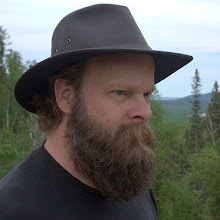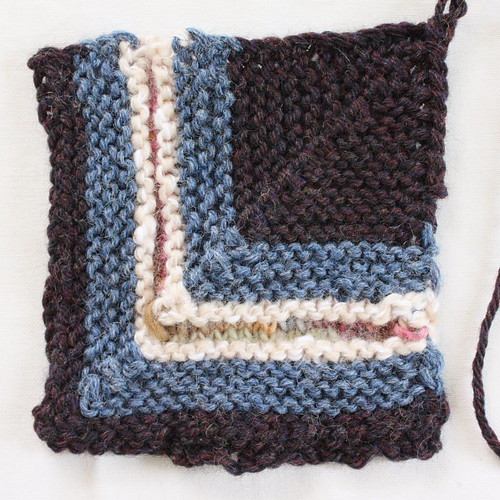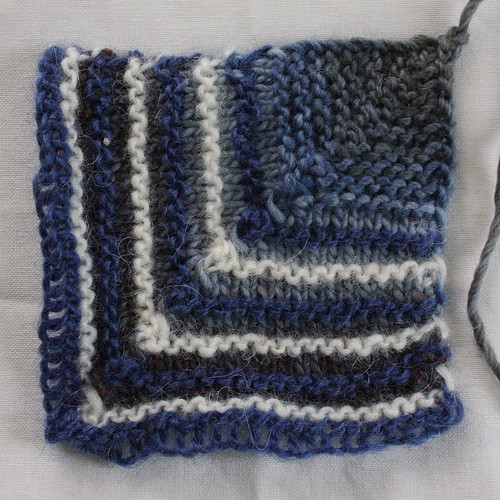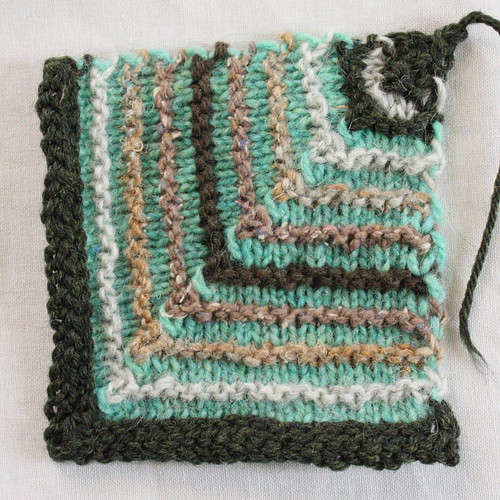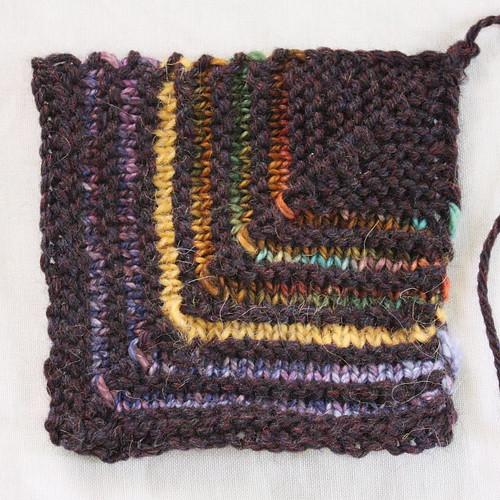
Change is in the air. These are fortuitous changes, but the reptile brain doesn't know that. The brain stem derives security from stasis. When upheaval threatens the environment, lizard mind skitters through the shadows. During the day I can tell it to go away. I exercise deep breathing or listen to music to calm my nerves, and contemplate the positive aspects of what is coming.
Yesterday I continued my knitting meditation with a square devoted to Sisyrinchium, a favourite wildflower. The first time I saw it was in the meadow at Elmbrae, the country property I owned when my daughters were little. Commonly called blue-eyed grass, it is actually a diminutive member of the iris family with slender, grass-like leaves and tiny, exquisite flowers hugging the stems. More precisely, they have golden eyes with violet-blue mascara. I broke into a stashed skein of lilac Briggs and Little, the closest way I could find to express the shade of the petals. And I learned a new technique from Vivian Hoxbro's book, Domino Knitting, to imitate the bead-like quality of a flower's centre.
When I left Elmbrae I came unrooted from many things, particularly the Earth. Every move disturbs the roots, even the one I'm approaching, but sometimes a plant benefits from moving to richer soil.
A wildflower, a lizard: I'm mixing metaphors again. But plants, reptiles and humans all exhibit parallel responses to disturbance. A plant stops growing and perhaps withers. Lizard runs away. People panic. We believe the rational mind can outreason fear, but buried reptile mind sometimes still emerges.
When I go to sleep, if I sleep at all, well, reptile mind controls the sleep cycle. Lizard emerges from his rock pile and raises hell.
Last night, halfway through knitting Sisyrinchium, I went to bed. During the night I visited a woman therapist, handsome with long blonde hair. She laid me on a couch, gave me an article to read and, while I wasn't looking, took off her pants and sexually assaulted me. I pushed her away, escaped the room and fled through an indescribable hypnopompic city. Even when I realized I had been dreaming, I believed the abuse really happened. I wanted to make a formal complaint. Finally waking around 4:30, I realized with relief the therapist was no one I really knew. But lizard king had succeeded in banishing me from sleep. After tossing and turning a while, I got out of bed.
Waging a war of peace, I finished Sisyrinchium this morning.
After leaving Elmbrae, I didn't see blue-eyed grass for 13 years, but this spring I found a potted cultivar at a garden centre on Eglinton Avenue, and transplanted it to my rock garden. For the past month it has opened numerous unblinking eyes like a mirror of heaven, suns unfolding from deep blue petals.
Two weeks ago when Sylvie and I went bird-watching beyond Lilac Way in the meadow where Savannah Sparrows and Eastern Meadowlarks nest, I found this flower growing wild again, along the path. When I move I must leave another garden with this cultivated beauty behind, but come 2010 I will know where to find her in her native state on a sunny May morning.
Today the last Sisyrinchium flower is dropping her petals in the rock garden. She closes her eyes and goes to sleep. She does not have a reptile brain to provoke nightmares, but I wonder what a leaf dreams after the flower falls.

